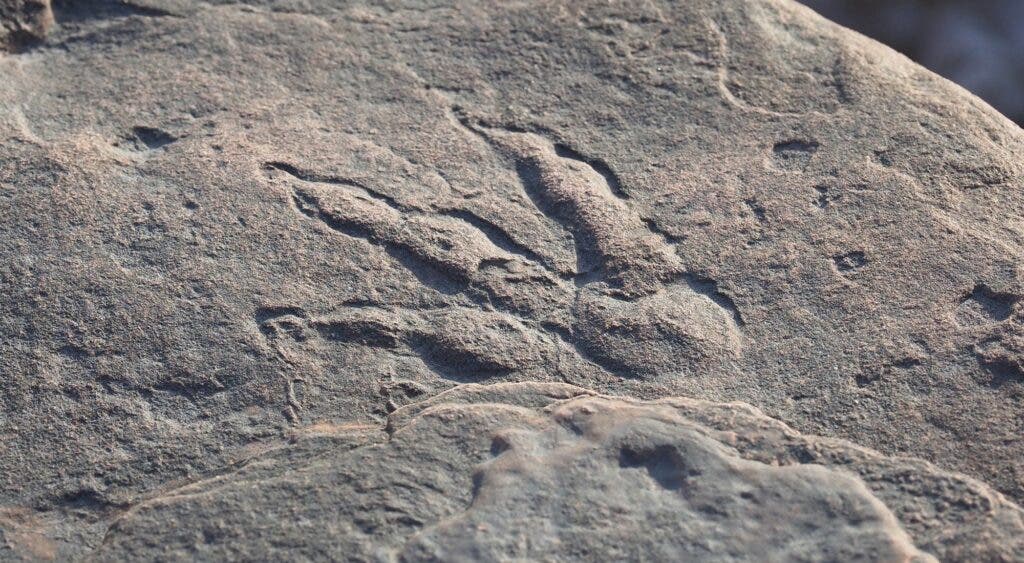Lily Wilder, aged 4, was walking with her father and per dog along a beach in south Wales, when she saw something unusual. It turned out to be a dinosaur footprint from the Triassic.

Although Lily doesn’t quite grasp exactly what she spotted yet, her keen eye is what found the footprint. She called to her dad who took photos and then posted them on a Facebook group, where he was directed to contact paleontologists. The incredibly well-preserved fossil is more than just a cool find: it can help researchers better understand how some dinosaurs walked around.
“It really is stunning preservation … You can see every detail of the muscles and where the joints are in the foot,” Cindy Howells, Amgueddfa Cymru National Museum of Wales paleontology curator, told NBC News. She called the footprint the “best specimen ever found” on the beach.
It’s not possible to tell exactly what species it was right now, but many things can be inferred about the dinosaur that left the footprint. It was probably about 75 cm tall, shorter than a horse but taller than a dog. The dinosaur would have walked on its two hind feet and hunted small animals, or maybe even insects.
“There are no fossilised bones from this 220 million-year-old dinosaur, but similar footprints in the USA are known to have been made by the dinosaur Coelophysis which does not occur in the UK,” reads a statement from the National Museum Cardiff, where the fossil will soon be hosted. “Many of the other footprints found at Bendricks Bay in the past have most likely not been from dinosaurs, but rather from some of the more crocodilian-type reptiles that also inhabited the area.” The museum also added that Lily will have her name listed as the one who discovered the footprint.
Dinosaurs first appeared some 230 million years ago, so this is one of the earliest ones to roam the Earth. It marks an important period, when dinosaurs were diversifying and exploring different ecological niches. They would have roamed across much of today’s Britain, but few fossils have ever been found in the area. As it enters the custody of the museum, it will be analyzed in greater detail by palaeontologists.
Meanwhile, Howell says that people should learn from this episode and try to spend more time in nature, especially in this very challenging pandemic period, when meeting with others can be so complicated. You never know what you may find, she says.
“Obviously, we don’t all have dinosaur footprints on our doorstep but there is a wealth of nature local to you if you take the time to really look close enough,” she says.



